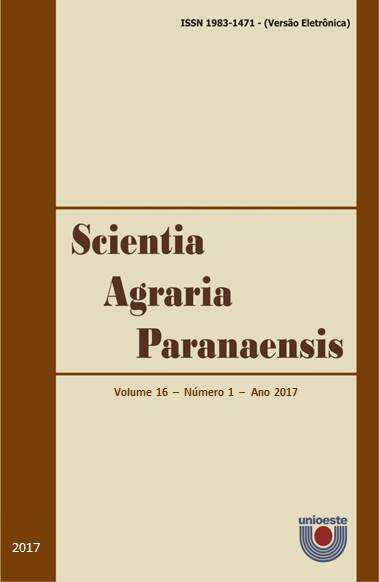Coat survey and Quarter reproductive age used in Vaquejada in Northeast micro-regions
Keywords:
Equus caballus, equestrian sport, phenotype, longevity, reproduction.Abstract
Aimed to evaluate the coat and Quarter reproductive age used in equine production used in Vaquejada in micro regions of the Northeast. They used information from 264 horses, taken from the database of the Association of Quarter Horse Breeders (ABQM). Were collected individual information: date of birth, sex and animal fur, number of copies of disputed official Vaquejada, better and worse placed, cumulative score in ABQM, coats and dates of parents' birth (31), coats and birth dates mothers (257). There was a higher frequency (P<0.05) of births between the months of September and October. There was no age-specific greater use of stallions or matrix playback (P>0.05). There was no correlation (P>0.05) between the number of children and the stallion entry age at reproduction. There was a greater preference for coats alazã (20.08%) and bay Tumbleweed (21.97%) in the progeny; the stallions were 34.47% and 29.92% Tumbleweed bay brown; while the matrices were 41.29% and 23.48% alazãs brown. Stallions bay Tumbleweed survived longer playback and more offspring. However, it was observed that while 93 of the 264 animals are children of parents at least one bay to bay coat or Tumbleweed, only 52 animals showed that the coat. It is concluded that the coat of stallions is related to greater frequency of use in reproduction; however, to obtain a coat expected in the progeny, we need to carry out a genetic study and not only phenotypic.
Downloads
Published
How to Cite
Issue
Section
License
Aviso de Direito Autoral Creative Commons
Política para Periódicos de Acesso Livre
Autores que publicam nesta revista concordam com os seguintes termos:
1. Autores mantém os direitos autorais e concedem à revista o direito de primeira publicação, com o trabalho simultaneamente licenciado sob a Licença Creative Commons Attribution que permite o compartilhamento do trabalho com reconhecimento da autoria e publicação inicial nesta revista.2. Autores têm autorização para assumir contratos adicionais separadamente, para distribuição não-exclusiva da versão do trabalho publicada nesta revista (ex.: publicar em repositório institucional ou como capítulo de livro), com reconhecimento de autoria e publicação inicial nesta revista.
3. Autores têm permissão e são estimulados a publicar e distribuir seu trabalho online (ex.: em repositórios institucionais ou na sua página pessoal) a qualquer ponto antes ou durante o processo editorial, já que isso pode gerar alterações produtivas, bem como aumentar o impacto e a citação do trabalho publicado (Veja O Efeito do Acesso Livre).
Licença Creative Commons
Esta obra está licenciada com uma Licença Creative Commons Atribuição-NãoComercial-CompartilhaIgual 4.0 Internacional, o que permite compartilhar, copiar, distribuir, exibir, reproduzir, a totalidade ou partes desde que não tenha objetivo comercial e sejam citados os autores e a fonte.


